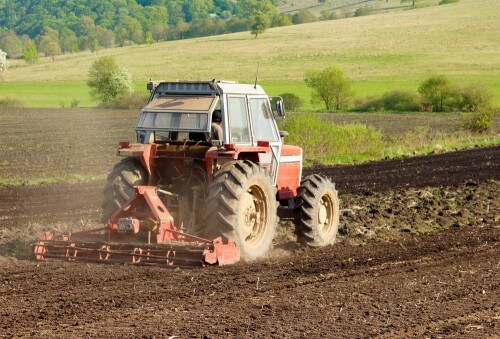For most people, the connection between mineral fuel and greenhouse gases is well known and familiar. Fewer people are aware of agriculture's "contribution" to global warming, a "contribution" that can be reduced and turned into the absorption of greenhouse gases by proper management of the agricultural economy

For most people, the connection between mineral fuel and greenhouse gases is well known and familiar. Fewer people are aware of agriculture's "contribution" to global warming, a "contribution" that can be reduced and turned into the absorption of greenhouse gases by proper management of the agricultural economy.
Agriculture and forestry constitute a source of about 20% of all greenhouse gas emissions. Farm animals, fertilizers, burning grass and more cause emissions of methane, nitrogen oxide, carbon dioxide or a combination of all the gases that cause warming. Added to this is the damage to forests and felling for agricultural crops.
However, this is not a necessary situation since agriculture and forestry can be a source of carbon dioxide absorption, because plants breathe carbon dioxide and store the gas in the soil. In other words, land use can be part of the solution and not the problem. As of 2016, a project is being carried out on behalf of The United Nations Environmental Department. The purpose of the project is to help farmers around the world estimate the amount of emissions and manage their land so that it has a positive carbon balance, that is, manage the use of land so that there is carbon absorption and greenhouse gas emissions are avoided.
Projects for sustainable management for climate change mitigation
They are used, among other things, in the Andes mountains in marshy areas where the soil has a high concentration of carbon, - the "Spekboomveld" area in South Africa where there is a risk to the soil due to overgrazing and damage to agricultural land. - A similar project also exists around Lake Tana in Ethiopia, as well as in local forests in western Kenya. The project uses tools developed by "Global Environment" (GEF) and is called the Carbon Benefits Project in collaboration with the United Nations and the University of Colorado. The tools allow farmers to measure and know how their activity affects the climate positively or negatively. At the disposal of the farmers is "The project website" where they receive information that will help them change the use of the land and compare the change to the previous situation.
The tools that the farmer can use are crop change, seed rotation, restoration of damaged land, "agriculture-forestry" and of course reforestation. So far, the project has enabled the assessment of "carbon profit" through proper land management in 130 countries. One of the countries where there are results is Ethiopia where "sustainable land management" was implemented in 2005, a secondary gain from the program was increased absorption of carbon in the soil and a reduction in emissions. The project in Ethiopia It covered about 6,000 square kilometers, and between 2005 and 2014 there was a decrease of two percent (2%) every year in the total emissions of Ethiopia as a whole.
In China, the method was implemented by planting goji plantations (Lycium barbarum) grown on soils that were salted and abandoned. Again it turned out that the profit was double, the plantations flourished and helped to improve the quality of the soil and the bushes absorbed carbon dioxide at a rate of about 30 tons per square kilometer every year. In addition, it turned out that the growers made a good profit and thus the project improved the social situation.
The University of Colorado in collaboration with the University of Bern continues and upgrades the tools and adapts them according to the users through links to conservation technologies and a database that also contains UN recommendations for the fight in Midbor.
Such projects point to tools that will allow the user in every country and every district to assess the impact of agricultural activity on the climate, to moderate the emissions of greenhouse gases and to increase the absorption of gases by correctly managing the agricultural economy for all its components and its environment, thus producing food while helping in the fight to mitigate global warming .

2 תגובות
I would expect a PhD holder not to write a sentence like "Plants breathe carbon dioxide".
They don't breathe the gas and certainly don't store it in the ground.
They absorb it as part of the assimilation process to sugar and do not store it in the soil.
The idea is excellent, it also makes the world more pleasant. In the bottom line, its meaning, which is charming in my eyes, is to increase the area of forests in the world.